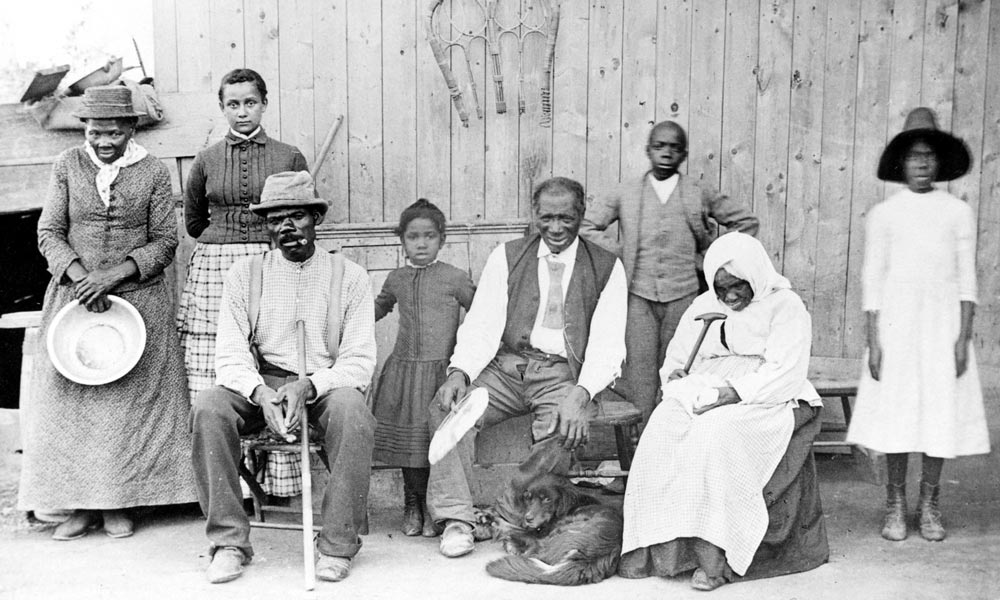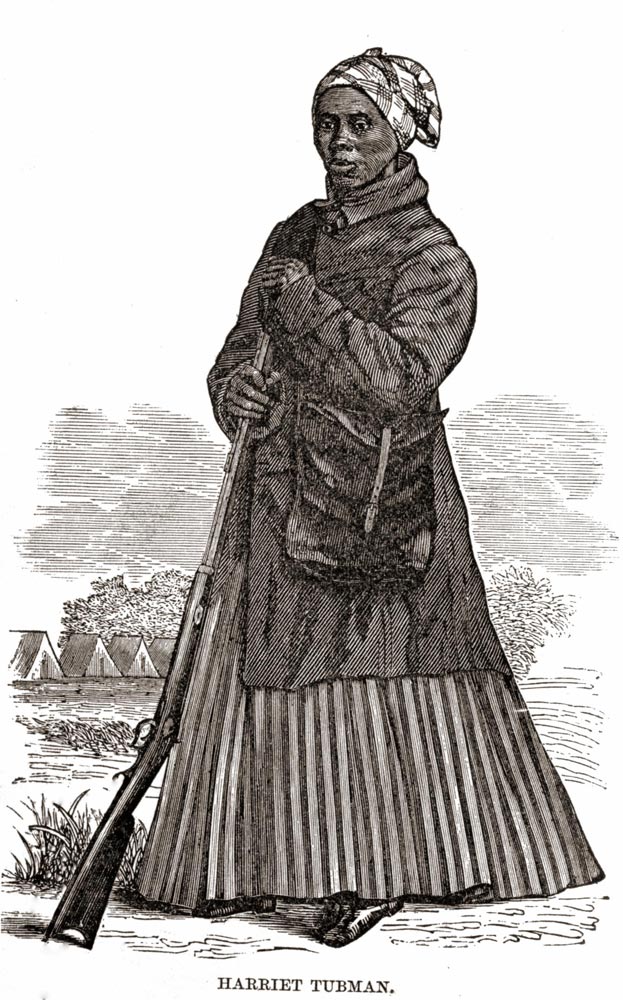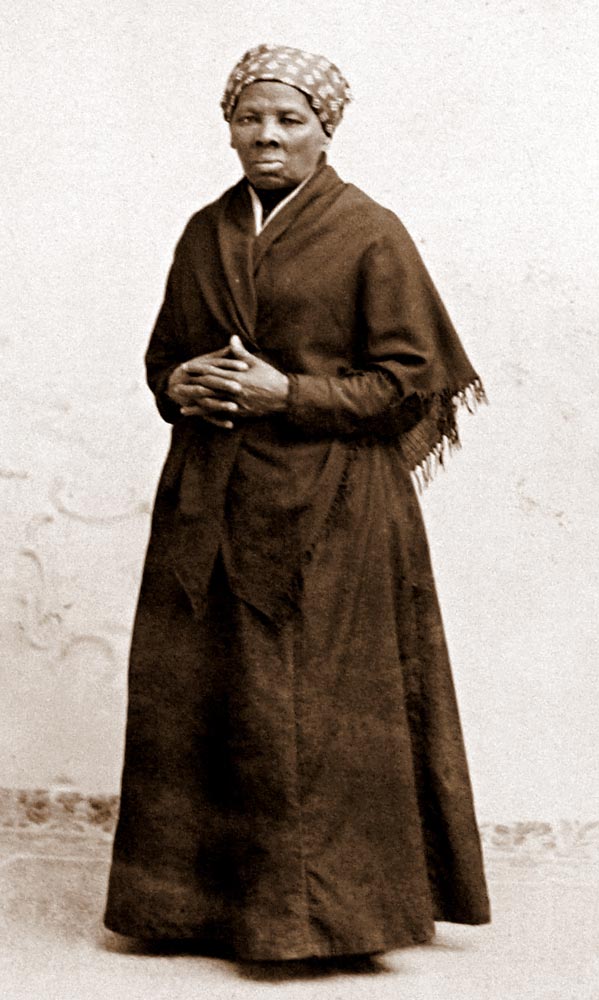Harriet Tubman (1820-1913) was born in the 1820s as Araminta Harriet Ross. She was an African-American humanitarian, Union spy during the Civil war and a renowned abolitionist. She was born in slavery, raised under harsh conditions and was subjected to whipping at early age. In fact at the age of six, she was considered old enough to work but she did not work in the fields. Harriet escaped from slavery in 1849 and afterward made several missions to rescue slaves from the South. She used to travel at night when rescuing the slaves and used safe houses collectively known as the Underground Railroad. During the Civil War, Tubman worked for the Union initially as a cook and then as a spy and an armed scout.
Childhood
Just like most slaves in the U.S., neither Tubman’s date of birth nor the exact birth place was recorded. Her parents were Ben Ross and Harriet Green. Both worked as slaves in Maryland. Ben was a woodsman managing the timber work on a large plantation owned by Anthony Thompson, while Harriet was a cook owned by Marry Pattison Brodess. The couple had nine children together, but three of their daughters were sold by Mary’s son Edward, separating them from their family thenceforth. Since Tubman’s mother had little time for her family, Tubman used to take care of her younger siblings.
When she was six years old, Brodess hired Tubman out to a woman called Ms. Susan. Here, she was to watch the baby as it slept. Later on, after escaping from Ms. Susan’s home, Tubman worked at James Cook’s home where she had to check the muskrat traps even after she contracted measles. She became very ill and Cook sent her back to Brodess. As she grew up, she was assigned to forest and field work, hauling logs, driving oxen and plowing.
Marriage Life
Harriet married a free black man named John Tubman in 1844. Their marriage was complicated due to her slave status. The status of a slave mother dictated that of her children; so, any children born to the couple would become slaves. Such marriages were popular in the eastern part of Maryland, where more than half of the black population already was free at this time. Immediately after her wedding, Tubman changed her name to Harriet from Araminta. She wanted to travel north where she thought she would be free and her marriage would not be split up by the slave trade. Her husband opposed the idea, but Tubman decided to go by herself anyway.
Escape from Slavery
 From 1847 to 1849, Harriet Tubman worked for Dr. Anthony Thompson, Jr., a Methodist clergyman, physician, and a real estate speculator. When Dr. Thompson Jr. died in 1849, there were some rumors that Tubman alongside several other slaves would be sold south. At this time, Tubman had started becoming ill again, following her head injury in her teenage years. Due to this reason, her value as a slave became diminished and no one wanted to buy her. Tubman, together with her two brothers: Ben and Henry, finally escaped from slavery on September 17, 1849. After leaving, the two brothers started to have second thoughts and finally opted to go back, and forced Tubman to return with them.
From 1847 to 1849, Harriet Tubman worked for Dr. Anthony Thompson, Jr., a Methodist clergyman, physician, and a real estate speculator. When Dr. Thompson Jr. died in 1849, there were some rumors that Tubman alongside several other slaves would be sold south. At this time, Tubman had started becoming ill again, following her head injury in her teenage years. Due to this reason, her value as a slave became diminished and no one wanted to buy her. Tubman, together with her two brothers: Ben and Henry, finally escaped from slavery on September 17, 1849. After leaving, the two brothers started to have second thoughts and finally opted to go back, and forced Tubman to return with them.
Tubman would then escape for the second time soon afterward but without her brothers. She used a network called the Underground Railroad, which was a well-organized system consisting of white abolitionists, enslaved and free blacks and other activists. The most prominent activists were members of a movement called Religious Society of Friends also known as Quakers. Tubman made her crucial first stop at Preston area in Caroline County. From here she went northeast through Delaware and then north to Pennsylvania. After she reached Philadelphia she started doing odd jobs while still saving some money hoping that one day she would rescue her family.
In 1850, Harriet Tubman returned to Maryland where she managed to free her sister and her two children from slavery. After this, she went to the South again and rescued her brother and 2 other men. The third return was meant to get her husband, but he had already married another wife. Fortunately, she found some slaves who wanted to be free and escorted them to the North. She then made several other trips back to the South and freed more than 300 slaves, sometimes threatening them with a gun if they decided to go back.
Life during the Civil War
 In 1861, when the Civil War broke out, Tubman hoped that the Union would emerge victorious since that would be a major step toward abolishing slavery. She also wanted to offer her skills and expertise to the Union force, and joined a group of Philadelphia and Boston abolitionists who headed to the Hilton Head District in S. Carolina. Later on, she met Union General Benjamin Butler, who was a strong supporter of abolition and had helped many escaped slaves into Fort Monroe. At Port Royal, Tubman worked as a nurse, making remedies from plants and helping soldiers who were suffering from dysentery and small pox.
In 1861, when the Civil War broke out, Tubman hoped that the Union would emerge victorious since that would be a major step toward abolishing slavery. She also wanted to offer her skills and expertise to the Union force, and joined a group of Philadelphia and Boston abolitionists who headed to the Hilton Head District in S. Carolina. Later on, she met Union General Benjamin Butler, who was a strong supporter of abolition and had helped many escaped slaves into Fort Monroe. At Port Royal, Tubman worked as a nurse, making remedies from plants and helping soldiers who were suffering from dysentery and small pox.
Working as a spy for the Union Army and a nurse, she managed to free more than 750 slaves during the Civil war. When the war ended, she returned to Auburn where she devoted herself into helping the elderly and orphans. Moreover, she raised funds for schools for the rescued slaves, found housing for the elderly and assisted the disabled.
In 1869, she married Nelson Davis who was 22 years younger than her. Their marriage lasted for 20 years until Davis died. In 1873, She bought a 7-acre plot with some money donated by Author Sarah Bradford. Later on in 1908, she purchased a property adjoining her home where she built a wooden structure that she housed the indigent and the aged. She worked here and was also cared for in her late years.
Death
Harriet Tubman spent her last couple of years tending to the needy and her family. She was also involved with African Methodist Episcopal Zion Church, and donated her estate to the church before her death. She died of pneumonia at the age of 93 years on March 10, 1913 and was buried with military honors. After her death, she became an American icon and was named as one of the most prominent civilian in the history of America before the Civil War.
